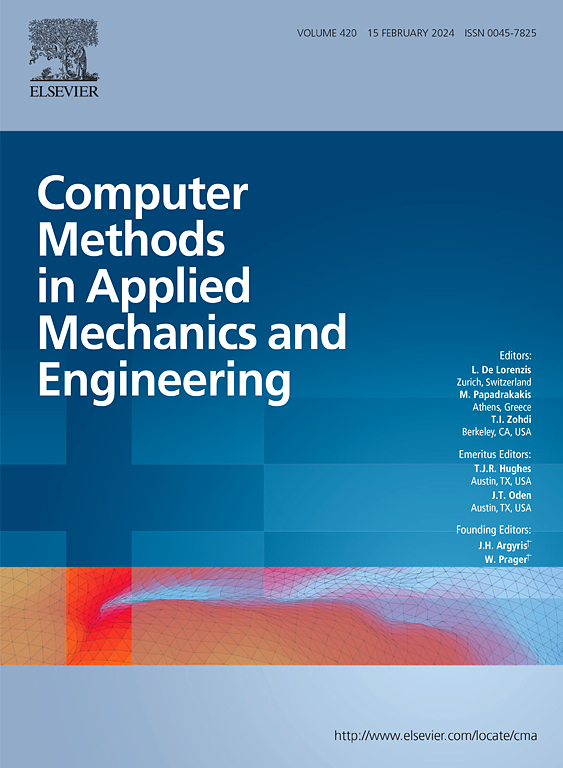cfgls:基于多尺度等几何拓扑优化设计的三维扫描体保形填充梯度晶格结构
IF 7.3
1区 工程技术
Q1 ENGINEERING, MULTIDISCIPLINARY
Computer Methods in Applied Mechanics and Engineering
Pub Date : 2025-04-30
DOI:10.1016/j.cma.2025.118023
引用次数: 0
摘要
随着增材制造技术的进步,3D扫描体积为轻量化和功能优化提供了新的机会。然而,有效的保形填充梯度晶格结构(cfgls)设计方法仍然缺乏。本文提出了一种改进的水平集函数(MLSF),将网格结构与三维扫描体的几何形状相匹配。此外,采用多尺度等几何拓扑优化(MITO)方法自适应优化梯度格的分布,确保最优积分。采用多项式插值法,结合MLSF和均质化方法建立了替代本构模型。将代理本构模型引入到MITO中,得到了扫描体积的相对密度分布。采用更新后的MLSF方法生成连续cfgls,其等效密度分布指导微观尺度晶格几何结构和宏观尺度分布的同步优化。通过半圆试件和工程舵的设计、制造和实验评估,验证了该方法的有效性和实用性。本文章由计算机程序翻译,如有差异,请以英文原文为准。

CFGLSs: Conformal filling gradient lattice structures designed by multiscale isogeometric topology optimization for 3D swept volume
3D swept volume, enabled by advancements in additive manufacturing, present new opportunities for lightweight and functional optimization. However, efficient design methodologies for conformal filling gradient lattice structures (CFGLSs) remain scarce. This paper proposes a modified level set function (MLSF) that matches lattice structures to the geometry of 3D swept volume. Furthermore, a multiscale isogeometric topology optimization (MITO) approach is used to adaptively optimize the distribution of graded lattices, ensuring optimal integration. A surrogate constitutive model is developed using polynomial interpolation in conjunction with the MLSF and the homogenization method. Incorporating the surrogate constitutive model into the MITO, the relative density distribution of the swept volume is obtained. Continuous CFGLSs are generated using the updated MLSF method, with the equivalent density distribution guiding the simultaneous optimization of both the micro-scale lattice geometry and its macro-scale distribution. The proposed approach is validated through the design, fabrication, and experimental evaluation of semi-circular specimens and engineering rudders, exhibiting its effectiveness and practicality.
求助全文
通过发布文献求助,成功后即可免费获取论文全文。
去求助
来源期刊
CiteScore
12.70
自引率
15.30%
发文量
719
审稿时长
44 days
期刊介绍:
Computer Methods in Applied Mechanics and Engineering stands as a cornerstone in the realm of computational science and engineering. With a history spanning over five decades, the journal has been a key platform for disseminating papers on advanced mathematical modeling and numerical solutions. Interdisciplinary in nature, these contributions encompass mechanics, mathematics, computer science, and various scientific disciplines. The journal welcomes a broad range of computational methods addressing the simulation, analysis, and design of complex physical problems, making it a vital resource for researchers in the field.

 求助内容:
求助内容: 应助结果提醒方式:
应助结果提醒方式:


